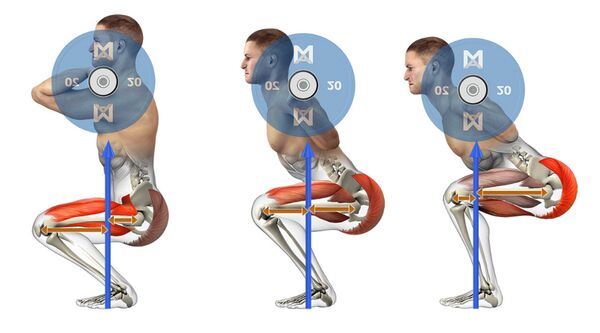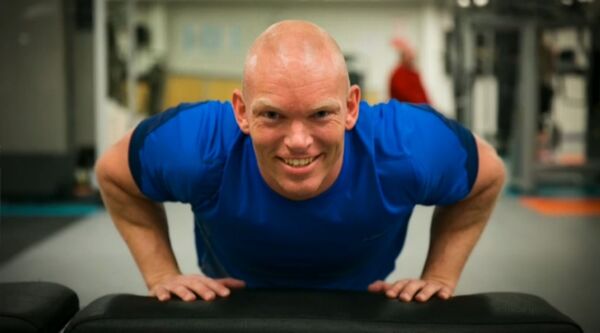Snemmskráning fagdeildar FS hefst föstudaginn 12.7.24 kl. 12:00. Aðrir en félagar í fagdeild FS geta skráð sig frá og með 19.7.2024.
Verð fyrir fagdeild hækkar 8.8.2024 og verður 75.000 kr.
___________________________________________________________
This two-day course is held by professor Tron Krosshaug, co-founder of Muscle Animations. Tron a full-time professor at the Norwegian School of Sport Sciences and the Oslo Sports Trauma Research Center. He is well-known for his research in ACL risk factors and injury mechanisms, but he is also passionate about strength training and biomechanics. Together with co-founder Oliver Faul, they have spent 15 years developing state-of-the-art educational material on strength training biomechanics, using 3D-animations.
BACKGROUND
Evaluating and manipulating resistance exercise technique is a core task for exercise professionals, including strength and conditioning coaches, athletic trainers and physical/physio therapists. Qualitative judgments of the biomechanics of exercise (i.e., exercise technique analysis) are believed to be critical to enhance performance, reduce risk of injury, and implement the most effective rehabilitation following injury. Analyzing movement or exercise technique is a complex, interdisciplinary professional skill that requires specific understanding of various exercise science concepts including human anatomy, physiology and biomechanics. The underlying skills to analyze exercise technique are critical to provide and tailor targeted technical performance feedback and designing exercises. Assessing exercise technique requires understanding of biomechanical principles, since external forces and moment arms (lever arms) determine net joint moments that ultimately are associated with muscle and strength adaptation. However, there is unfortunately limited science as well as educational information available on strength training biomechanics.

The company Muscle Animations (MA) was founded in 2013 with the aim of disseminating and visualizing evidence-based knowledge about technique, muscle loading, and biomechanical principles in strength training. Specifically, we want to promote the understanding of how to maximize the effect of strength training exercises and minimize the risk of injury.

A TWO-DAY WEEKEND COURSE IN STRENGTH TRAINING BIOMECHANICS
This two-day course is held by professor Tron Krosshaug, co-founder of Muscle Animations. Tron a full-time professor at the Norwegian School of Sport Sciences and the Oslo Sports Trauma Research Center. He is well-known for his research in ACL risk factors and injury mechanisms, but he is also passionate about strength training and biomechanics. Together with co-founder Oliver Faul, they have spent 15 years developing state-of-the-art educational material on strength training biomechanics, using 3D-animations.

In this course you will learn the principles for doing a biomechanical analysis, and further enable you to do such conceptual analyses by yourself. During the course there will be a combination of theory, practical work, group assignments and discussions. By the end of this course, you will receive a diploma for the weekend course. Furthermore, you will get free access to the two new e-learning courses Biomech 1 and Biomech 2, for those who wants to repeat the weekend course content (and study the topics that we do not have time to go into in this weekend course). Biomech 1 and 2 will lead to an exam where you can get a “MA certification”
Biomech 1
https://vimeo.com/894809254/a9f9e30bf2?share=copy
Biomech2
https://vimeo.com/708650752/ba5bc26742?share=copy
COURSE AGENDA
Day 1
- Theory room: Basic biomechanical principles (Biomech 1)
- What determines muscle loading?
- A standard procedure for doing a biomechanical analysis
- Dumbbell press wide vs narrow grip (theoretical & practical analysis)
- Pushups vs dumbbell press (theoretical & practical analysis)
- Internal vs external moments
- Squat biomechanics
- Optimizing strength training exercises
- Lunch
- Gym: Optimization of exercises
- Practical exercises (Squats, Deadlifts, Bench press, leg press, leg extension, biceps curls)
- Group assignments
- Discussion
- Theory room: Discussions
- Open/closed kinetic chain
- Spine loading in heavy lifts (squats, deadlifts, leg press). Abdominal pressure, pelvic tilt, …
- Q&A
Day 2
- Theory room: Advanced analyses (Biomech 2)
- Lunges
- Cable cross
- Biomechanics of the Sterno-Clavicular joint (Scapular biomechanics )
- Theory room: Anthropometrics
- Theory room: A critical view on existing research
- EMG vs force-moment arm analyses
- Application to pushups
- Lunch
- Gym: Effective body weight training
- Plank
- Squats
- Theory room: Discussions
- Is deeper better? (Squats)
- Q&A
If you have specific questions that are relevant to you and you wish to discuss in the course, you may also send these to Tron in advance: tronk@nih.no
Frekari upplýsingar um leiðbeinanda:
https://www.nih.no/english/about/employees/tronk/




